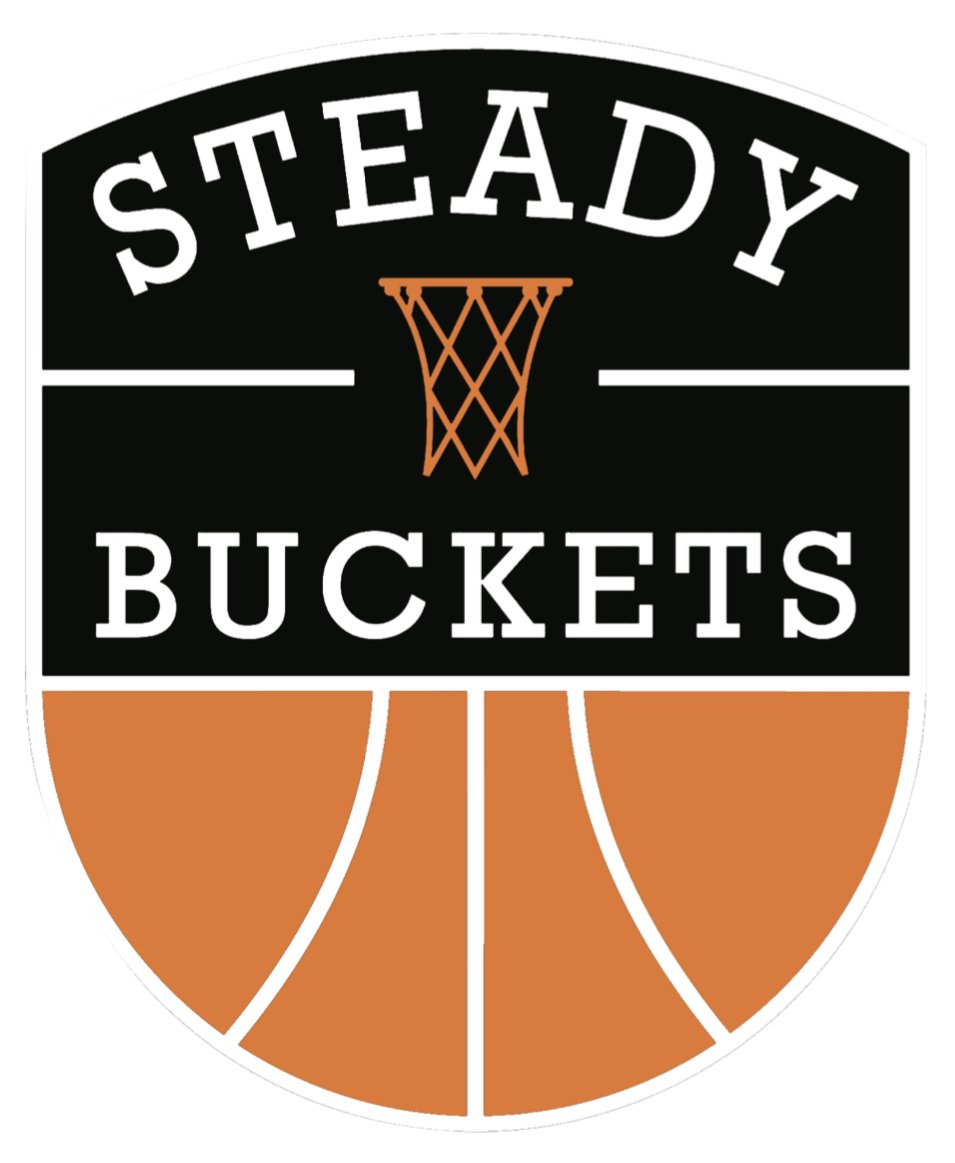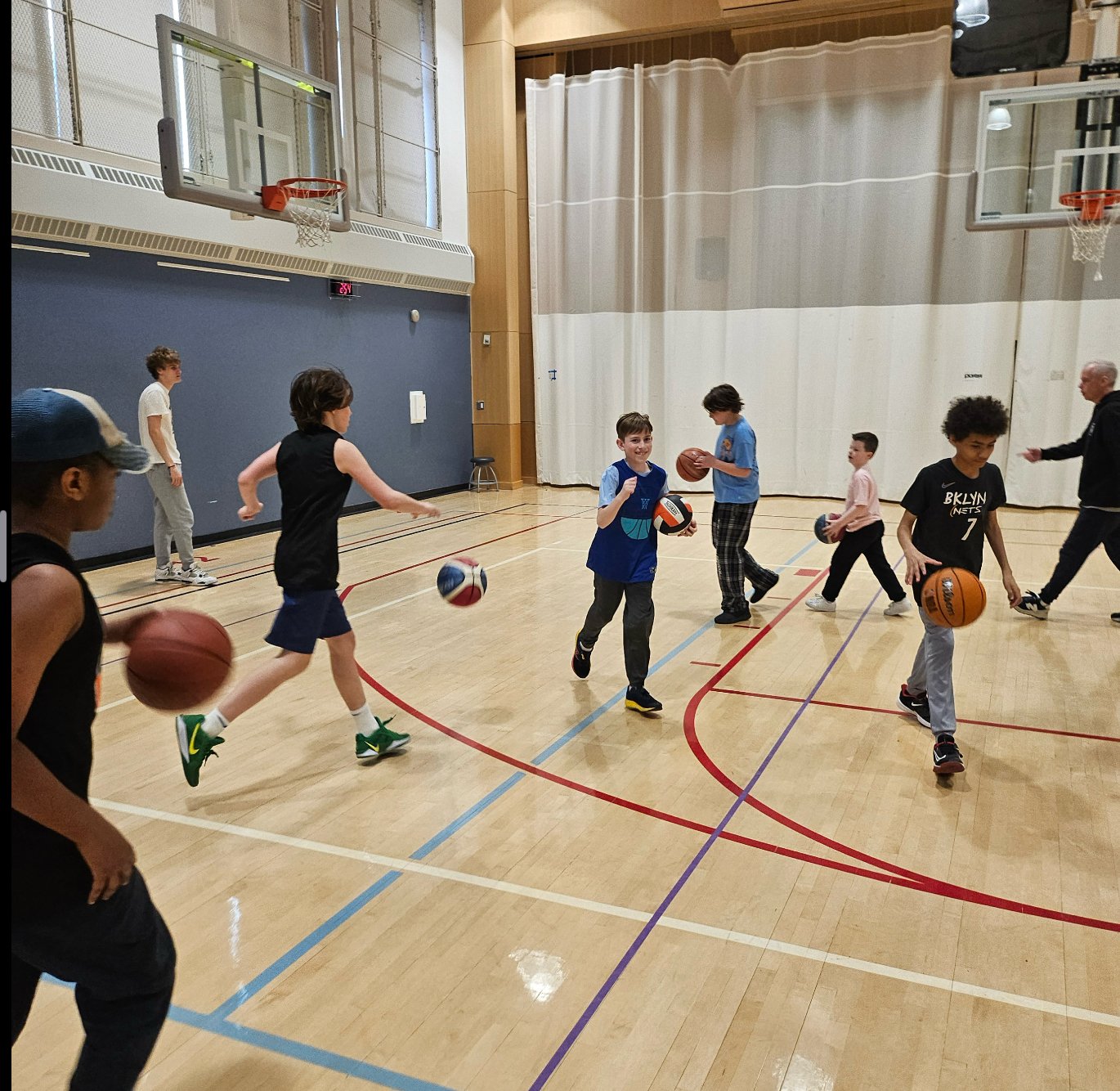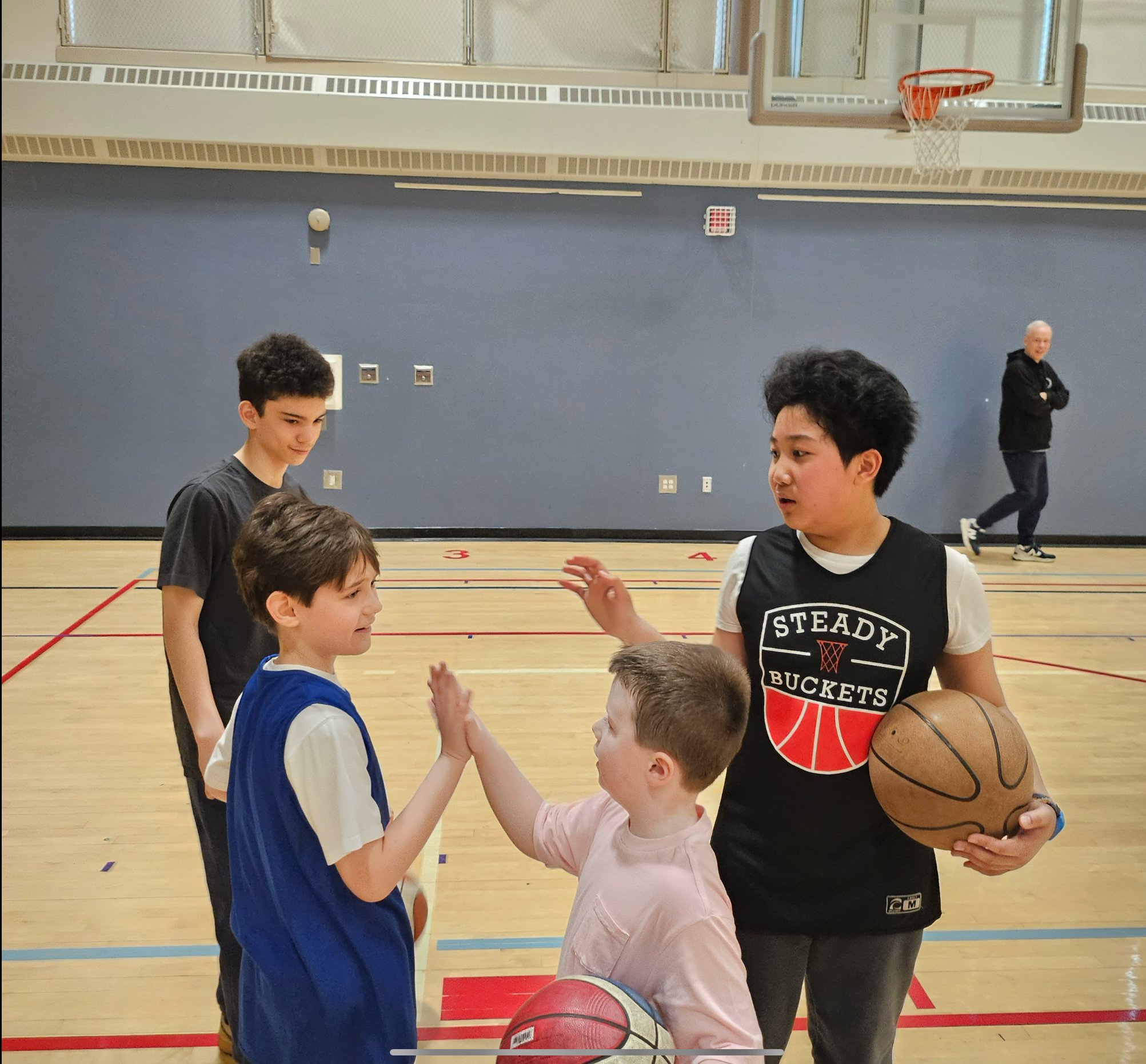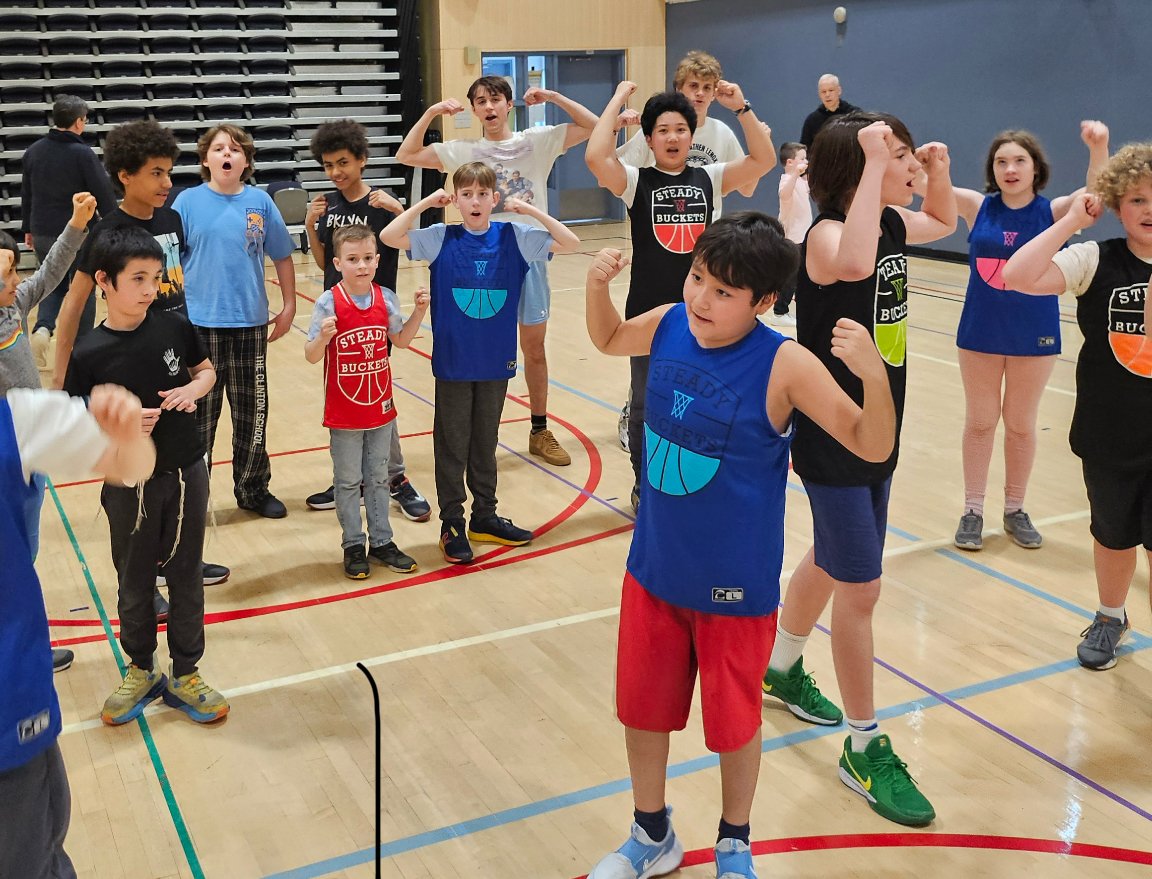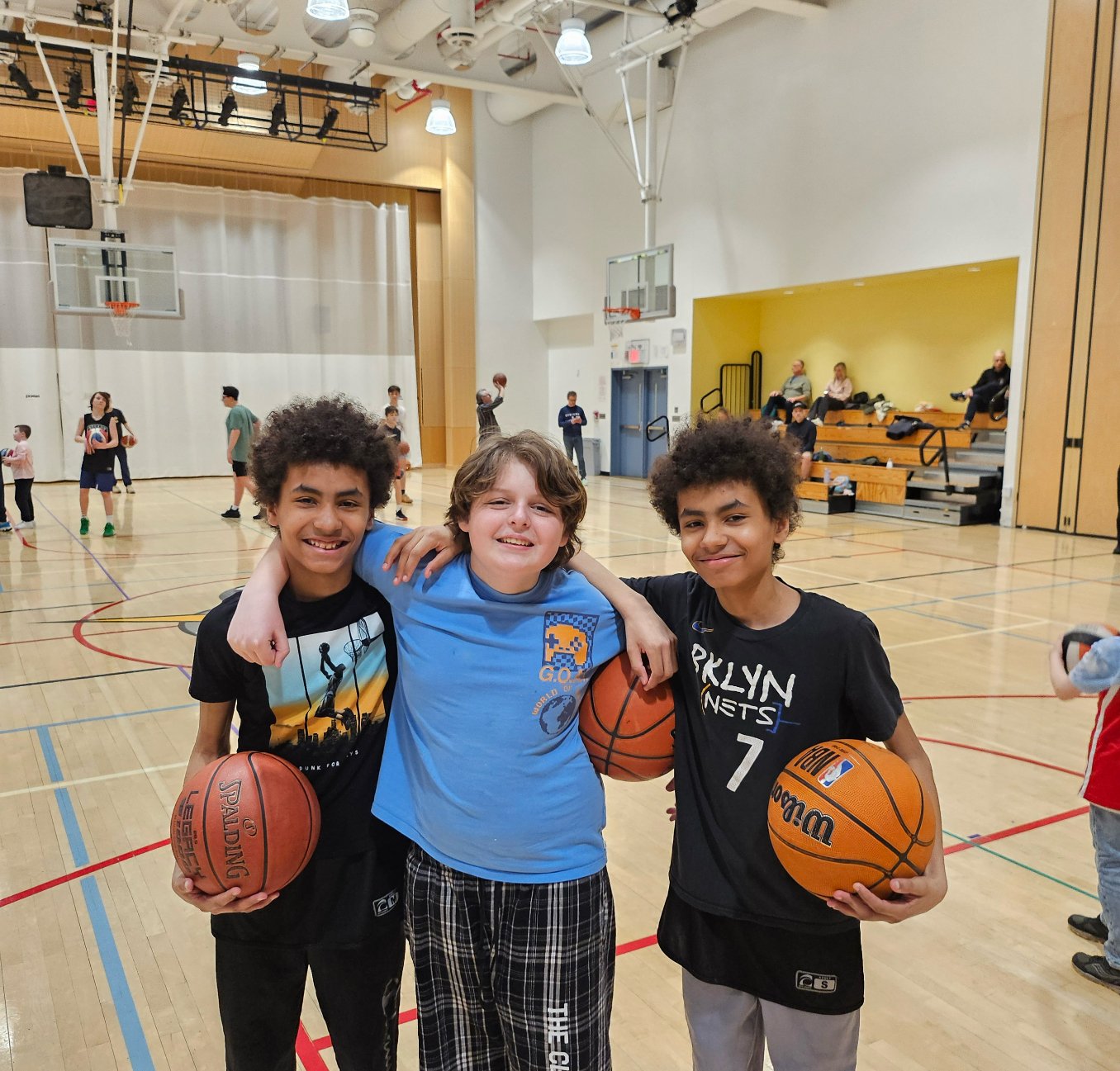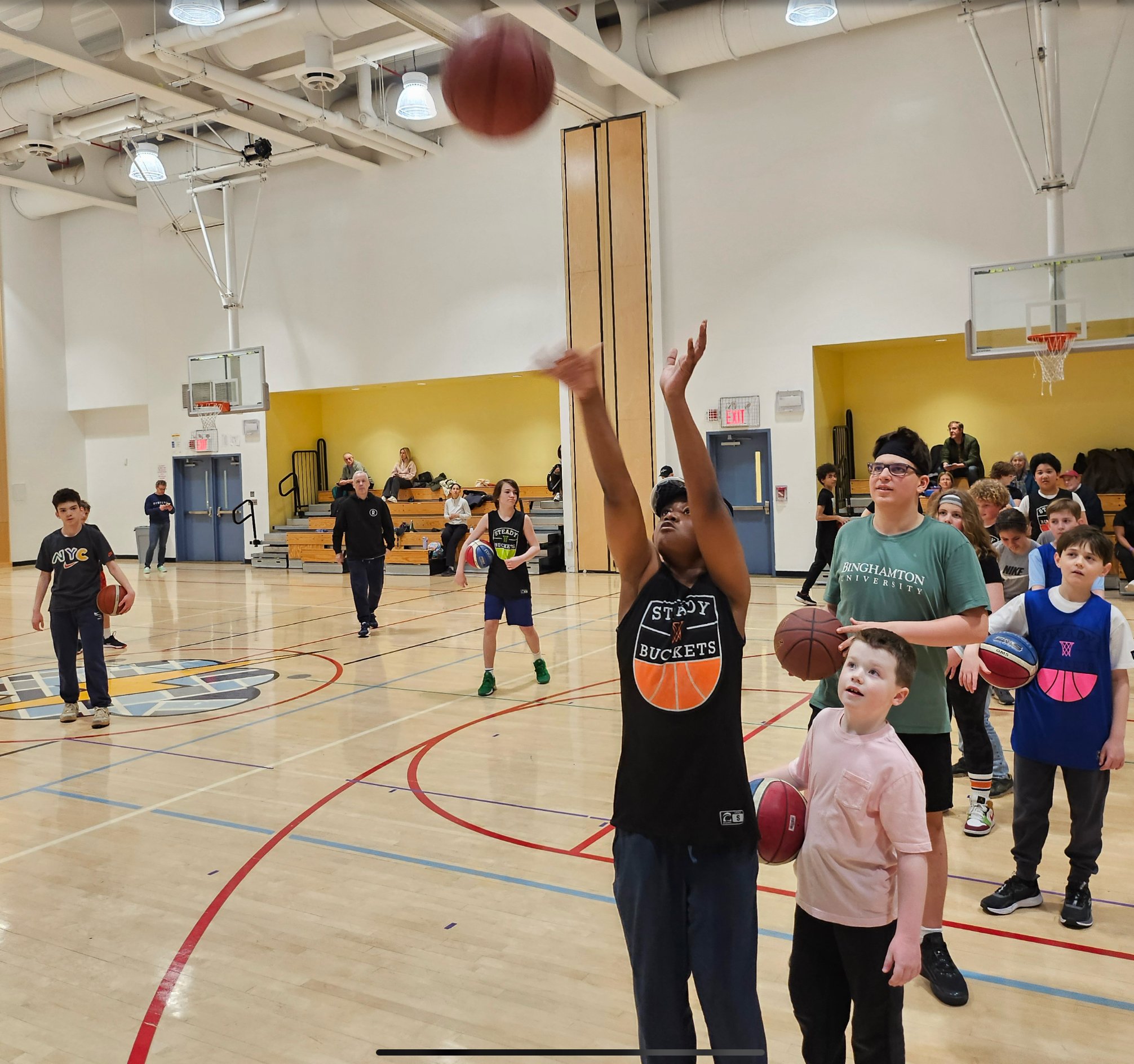Make everyone feel welcome
You're not building a traditional basketball team. You’re building a community. Specifically, you’re building a community for players who often don’t feel like they can fit in other basketball programs, players who may be carrying trauma from other youth sports experiences. The first foundational piece to building a community is to make people feel welcome and to make them feel like the gym is their space.
• Greet all players by name and encourage them to “come in and play.”
• Smile and give high fives (no such thing as too many).
• Introduce yourself to new players and families.
• If a new player is hesitant to join, assure them that everyone is nice.
• Tell them the two basic rules are 1) try your best and 2) have fun. Use the language “mess up, try again” a lot. It makes people feel welcomed even if they lack basic skills. “If you don’t mess up, you won't get better.”
• Make sure a variety of different balls are available and let players choose their own ball (Build in choice to as many drills and teaching points as possible).
• Start with easy drills before getting harder.
• End by saying goodbye to all players and “see you next time.”
• Bring a grounded, kind and unflappable presence to the court.
Give players the space to observe
The first step to earning trust is to, “do no harm.” Before you get to the good stuff, when you challenge players to push their comfort zones, you must first earn a basic foundation of trust and not force players to participate if they don’t want to. Check in with them and make sure they know that they’re welcome to join, and that you want them to join; but that it's also ok to watch. For some players, staying in the gym and watching a full workout is the best way to get started. Sometimes new players will watch for a few weeks before joining. Assure parents that it is normal and encourage them to keep coming back. Once the player knows what to expect, they may be more willing to try. Once they try and have a positive experience you can start holding them to a higher standard.
• If a player is resistant to trying, check in with them and let them know that everyone is nice.
• Let them know that they don’t have to play and that you’ll leave them alone, but that you’ll be checking in with them again shortly.
• Offer them a ball to hold, even if they aren’t ready to do the drill.
• Offer them a personal coach (volunteer high school player) to help them.
• Allow them to do their own thing on a side basket when appropriate.
• Encourage all players to participate as much as possible but never (***rarely, never say never***), make players feel like they have to play or can’t take a break.
• Make sure they know that you really want them to join, but that you wont make them or threaten them or kick them out if they don’t join.
• Everyone is welcome. Period. Your goal is to be effective and you can’t be effective if they leave and don’t come back.
Help players connect with their teammates
The best thing that basketball provides is friendship, it isn’t even close. Remind your players of this. Encourage them to support each other. Partner players with each other who you think will get along. Say things like, “you two should be friends,” or “I like seeing the two of you together.” Understand that friendships build independent of conversation. A father once told me that he doesn’t understand how his daughter could be so close with her teammates, “even though they rarely ever speak.” I answered, “but they run together, they sweat together, they pass to each other, they fail together and they succeed together. Isn’t that so much more intimate than talking?”
• Encourage high fives.
• Passing drills require teamwork.
• Make team goals so they can succeed together. Make the standards high, like 50 sprints from baseline to baseline or making 500 shots as a team.
• Be loud when using a player's name so everyone gets used to hearing each other’s names.
• Have players demonstrate the drill for all to see.
• In your closing speech, give the group credit for their collective efforts and also compliment individual players so they can hear you speak about them with pride.
• Compliment players in front of their parents
• The first step to helping players to connect is earning each other’s respect.
• Close practice with hero shots. A player has to make 5 shots in a row to end practice. If they miss, the group runs a sprint or push ups/sit ups. They fail together and a different “hero” emerges each week. Being a hero earns a player social status and helps make connections.
• You can’t force connections to be made, but you can create an environment where they’re more likely to occur.
Spend time with each player and encourage them
Model the connections that you want players to make with each other. Basically, be a good friend. Be positive, enthusiastic, uplifting and establish a connection with each player. Use their names and give them your full attention. Attention doesn’t mean being on top of each player, or giving them excessive feedback–attention means reading their body language and other signals. This way you can understand each individual player’s comfort zone and become flexible with your approach so you can coach each player according to his or her needs. Give players compliments; but also give them detailed instructions on how to improve their technique. Some players won’t like being complimented, so try to remember and don’t. Some players will want a lot of your time and other players will have less tolerance to talking with you and prefer a short burst of coaching. Treating players how they want to be treated is critical. Use the platinum rule instead of the golden rule. The golden rule is to treat people the way that YOU want to be treated. The platinum rule is to treat people the way that THEY want to be treated.
• Reading emotions and energy is the most critical skill for a coach to be successful.
• Coaches can have the right intentions but chase a kid away by giving them too much attention or trying too hard to connect with them.
• Know when to stay and when to walk away.
• Some players may not like high fives. Try a fist bump or finger tap or an air high five.
• Look for patterns in their behaviors and start to understand their personalities. You’ll find that most players are distinctly either sensory seekers or sensory avoiders. Some are born anxious and that takes a different kind of thoughtfulness and finesse.
• Even sensory seekers hit a limit and become overstimulated. • Even sensory avoiders have a desire and need for stimulation.
• Coaches should be aware of their players’ comfort zones and toggle between pushing limits and finding enough comfort to not shut down.
Put parent’s minds at ease knowing their child is safe
You can’t simply focus on welcoming the player, you must also welcome the parent and make them feel comfortable. I like to talk with new parents on the phone for just a few minutes; but we may not always have a chance to connect. When I do, I explain that every child has different goals and expectations, but the Steady Buckets’ 5 Pillars of Success are our guiding expectations. I have an advantage of having a child with ASD and I explain my son as my “selfish” motivation. You of course don’t need a loved one on the spectrum to succeed as a coach, but sharing a personal connection and explaining to parents why you’re so passionate about basketball for kids with ASD is important to share.
• Always practice transparency. Tell parents that you have no formal training in special education or child psychology– unless you do–but that you have a lot of experience coaching youth basketball and you’ve been certified by The Steady Buckets ASD program.
• Be welcoming to parents as well as players.
• Make yourself available to chat during practice. Sometimes while the kids are playing, the best thing to do is to get out of the way, so you can always find a little time to stand or sit next to a parent and chat. You’ll learn a lot about the player by talking with their parents.
• And they’ll learn about you and begin to trust you.
• For this reason, we allow drop offs, but prefer that parents stay.
“This is the difference between Steady Buckets and most other programs, and all schools, you invite the parent in and work with them. It's another stand out special thing that makes your program relaxing. You have nothing to hide!“
Help players walk with pride and confidence
Key word is “help.” You can’t make this happen with any precise technique, however you can help players achieve a higher sense of self esteem. We talk about the difference between self pity and self empowerment. Self pity says, “poor me” and “I can’t.” Self empowerment says, “I choose to challenge myself and try difficult things.” As a coach, you can help them to first become aware of the choice and then choose empowerment until it becomes a habit. There is no better feeling than accomplishing something for the first time or setting a new personal best. Encourage players to track their records and celebrate their achievements. End all practices by repeating the 5 SB Pillars, performing champions pose and with a team cheer!
When they feel proud of themselves, your players will gain confidence.
• Challenge players with both consistency and creativity.
• Have your set of standard fundamental drills that players can improve on from week to week.
• Also have new drills every week.
• Improvement is sometimes tough to feel over long periods of time. An observer can often see the improvement, but the player can’t. Create drills that include record keeping so players can keep track of their development.
• Do a lot of footwork drills.
• Move drills quickly and allow players to pick their own steps.
• Have players follow detailed instruction at times; but also encourage creativity.
• Creativity and anxiety have an inverse relationship. You can’t be both at the same time. Players who have a hard time joining the workouts are usually experiencing a form of anxiety. If you can help them to get creative, such as breaking drills down into smaller steps or approaching the player with lightheartedness, their anxiety will go away and allow them to join.
Help players control their strength
Children are always told to be careful with their bodies, keep their hands to themselves, be gentle, and that’s just a small list. Players can’t learn to control their strength unless they’re encouraged to use their strength. Encourage players to run faster, jump higher and dribble the ball with more force. We play dribble knockout and we have a gentle side and a rough side. It allows players to choose their level of physicality, but encourages them to knock each other around a little bit. Basketball is a physical game and your players must often unlearn what they’ve been taught about how to use their strength appropriately. Social rules are hard enough for players with ASD to understand, and basketball social rules are different from what they’ve learned in school.
• Teach drills and skills in language that includes body parts. “Wide feet” “low knee” “straight spine.”
• Help players understand that skills in basketball are simply controlling your body.
• Encourage them to mess up a lot. “If you don’t mess up, you won’t get better.”
• Set up physical drills, built always have a modified version for players who want a less physical option.
• Set up exercises where players could gently collide and teach them about body control and spatial awareness.
• When teaching players how to shoot, talk about being strong and soft and demonstrate that as well.
Help players laugh more
I always say, “everything is contagious.” Laugh and others around you will laugh. Make sure you’re having fun and make jokes. Never make fun of a kid or use sarcasm. Even if the child doesn’t understand the joke, their parents will, and they will lose trust in you.
Maintain a cheerful vibe overall.
Remembering specifics about players will help you create inside jokes with them.
Be chill about mistakes.
Maintain inner and outer calm.
When players get upset, hear them out, offer a solution that works with their needs.
Use yourself as a model for making mistakes.
Play Sharks and Minnows, or group games at the end and let yourself be caught.
Smile and give lots of high fives.
Model friendship with Junior Coaches and parents.
Help players be open to new things
“I can’t,” is a lonely expression. Kids very often say “I can’t” but never say “we can’t”. We know we can, because look at us, we are doing it.When a player struggles to try new things try to change their perspective. Instead of them
trying something new as an individual, welcome them to join the group. We are all just doping
our best, messing up and trying again. `Keep the drills moving fast. Don’t give players time to get demoralized. Throw new drills at players in quick 30 second to minute intervals. What you’ll find is that no matter how hard a drill may
be, someone will get it at least one time. That will empower others to follow (think RogerBanister). Try to break down the wall that is built on self doubt. Show your players that perfection is never the goal and model that by messing up in your own demonstrations. When the coach isn’t perfect it allows the players to try new things that they aren’t good at.
Help players understand instructions
Teach each skill in a sequence, starting easier and getting harder and more complex. Always start with one simple tip or instruction and then layer more tips and skills on top. Some players may only be able to handle one tip or instruction at a time, while others can be challenged to follow multiple step instructions. Understand that everyone will learn differently. Some players prefer language, others prefer visual demonstrations. Some players need to fail multiple times before listening to a tip while others always want more explanation before trying. Some players prefer to be coached as part of a group with the explanation being presented to everyone at the same time and others want one on one instruction. Again, keep it moving. Coach and move. Let the assistant coaches do most of the one-on-one coaching while the head coach mostly speaks to everyone at the same time.
Speak about your players with pride
Speaking about your players with pride is different than giving them compliments–but you should do that too! Speaking about them with pride implies a sense of self pride from the coach that is attached to their players’ development. It’s like saying, “I know I’m a great coach because look at the results I’m getting with these players.” A coach’s job is to help a player travel from where they are to where they’d like to go–the word coach is derived from a horse carriage. Being proud of yourself as a coach is the same thing as being proud of your players and it makes success a shared experience.
Speak directly or indirectly about a player's performance to their parents so they can overhear.
Note when players don’t want any feedback at all; but speak with pride about another player within earshot.
